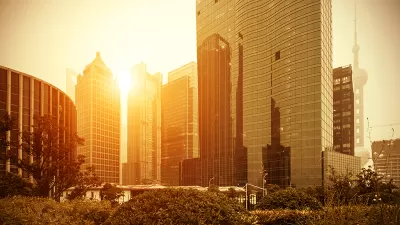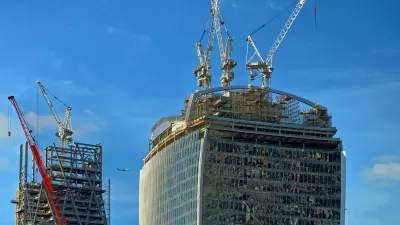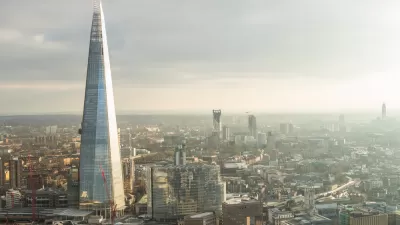Architects at NBBJ in London have designed a building—two buildings rather—that work together to cancel out the shadows they cast.

Using digital design platform Rhinoceros, architects modeled the shape a shadow-less skyscraper would need to take. "They used computer modeling to design a pair of buildings, one of which works like a gigantic, curved mirror. The glass surface of the northernmost building reflects light down into the shadow cast by its southern partner. And the carefully defined curve of that glass allows the reflected light to follow the shadow throughout the day. Note that the reflected light is diffuse—not a focused death ray that could fry an egg or burn tourists."
Greenwich, England is the design's intended site, but a similar model could potentially find use in cities worldwide. From the article: "All you need to do is change the inputs: when and where the sun passes overhead at your location. The approach could be helpful in places like New York, where residents have resisted the construction of several new skyscrapers that they say will plunge Central Park into shadow."
FULL STORY: The Plan to Build a Skyscraper That Doesn’t Cast a Shadow

Maui's Vacation Rental Debate Turns Ugly
Verbal attacks, misinformation campaigns and fistfights plague a high-stakes debate to convert thousands of vacation rentals into long-term housing.

Planetizen Federal Action Tracker
A weekly monitor of how Trump’s orders and actions are impacting planners and planning in America.

Chicago’s Ghost Rails
Just beneath the surface of the modern city lie the remnants of its expansive early 20th-century streetcar system.

Bend, Oregon Zoning Reforms Prioritize Small-Scale Housing
The city altered its zoning code to allow multi-family housing and eliminated parking mandates citywide.

Amtrak Cutting Jobs, Funding to High-Speed Rail
The agency plans to cut 10 percent of its workforce and has confirmed it will not fund new high-speed rail projects.

LA Denies Basic Services to Unhoused Residents
The city has repeatedly failed to respond to requests for trash pickup at encampment sites, and eliminated a program that provided mobile showers and toilets.
Urban Design for Planners 1: Software Tools
This six-course series explores essential urban design concepts using open source software and equips planners with the tools they need to participate fully in the urban design process.
Planning for Universal Design
Learn the tools for implementing Universal Design in planning regulations.
planning NEXT
Appalachian Highlands Housing Partners
Mpact (founded as Rail~Volution)
City of Camden Redevelopment Agency
City of Astoria
City of Portland
City of Laramie




























